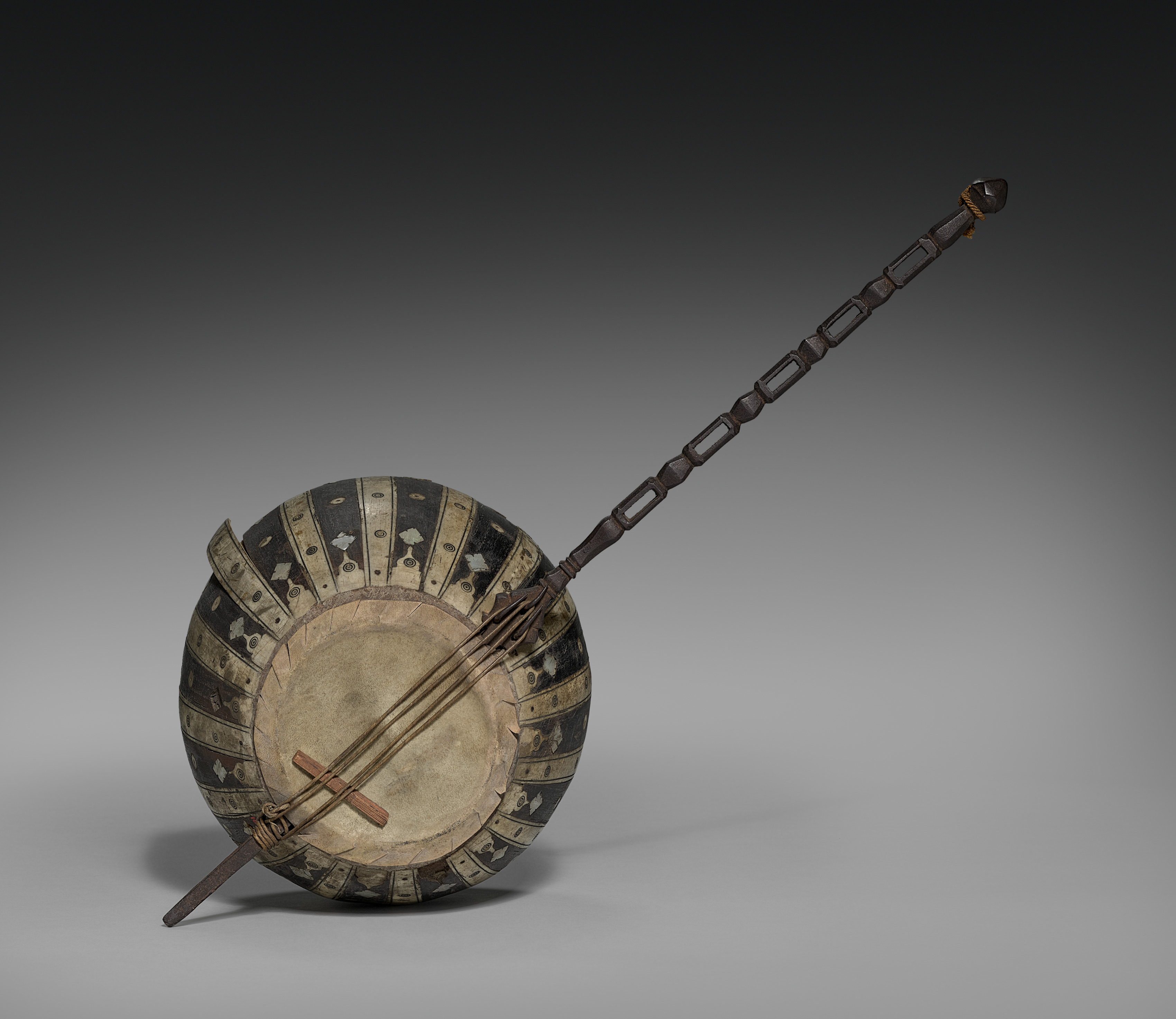The Cleveland Museum of Art
Collection Online as of April 19, 2024

Kamānche (incomplete)
1875–1900
(Caucasian, maybe Azerbaijan, or Kashmir)
Overall: 58.5 x 26.8 cm (23 1/16 x 10 9/16 in.)
Location: not on view
Did You Know?
The instrument's spike would be placed on the ground or today, on the knee, when it was played.Description
Kamānche is a Persian term first used in the 10th century to describe an instrument that is sounded with a bow. From there, bowed instruments spread to Byzantium, Central Asia, the Far East, and then to Europe. In Egypt, it is known as the rabāb, a term known throughout the Islamic world from North Africa to Southeast Asia.The names of musical instruments often reveal origin, context, or musical function. In Europe, North Africa, and Asia where contact with Middle Eastern culture occurred, variations of Arabic and Persian terms for instruments are widespread. Usually, related names refer to similar instruments; however, this is not always true. Among these "floating terms" are the names zūrna, rabāb, kāmanja, nāy, and dombak.
- ?-1918Ralph King [1855-1926], Cleveland Heights, OH, given to the Cleveland Museum of Art1918-The Cleveland Museum of Art, Cleveland, OH
- "Accessions." The Bulletin of the Cleveland Museum of Art vol. 5, no. 8/9 (1918): 82-85. Mentioned: p. 82 www.jstor.orgD. S. M. "Exhibition of Musical Instruments." The Bulletin of the Cleveland Museum of Art 8, no. 9 (1921): 134-43. Mentioned: pp. 134-137 www.jstor.org
- Exhibition of the Month: Music in Art. The Cleveland Museum of Art, Cleveland, OH (organizer) (October 2, 1945-February 4, 1946).
- {{cite web|title=Kamānche (incomplete)|url=false|author=|year=1875–1900|access-date=19 April 2024|publisher=Cleveland Museum of Art}}
Source URL:
https://www.clevelandart.org/art/1918.353